Much is known about Gerald Gardner’s life. He followed his nanny and lived for a while in Sri Lanka (Ceylon). He subsequently lived in Borneo and in 1923 he moved to Malaysia, where he was employed for the next thirteen years as a rubber tree plantation inspector and a customs official.
During his time there he compiled a book about ’the Kris and other Malay weapons’. In this article, I will be sharing my experiences of my visit to Indonesia (Bali & Java) in 2019 and what I have learned about the Kris and indigenous practices.
‘Keris and other Malay weapons’
In the foreword, Gardner wrote: “I venture to hope that this little book may be of interest and assistance to collectors of weapons. It is possible also that ethnologists may be interested in the customs and superstitions connected with these weapons and their origin. The photographs are almost entirely of my own collection”
It is quite detailed and contains quite a few drawings and photos.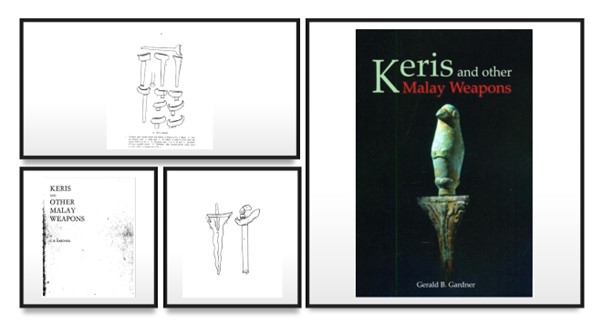
It has become quite a classic and I even found a copy of it for sale in Chiang Mai, Thailand (2017)
As to its accuracy, some of my Indonesian friends think there are some mistakes especially when ‘Majapahit’ is mentioned. “Majapahit was a Javanese Hindu-Buddhist thalassocracy empire in Southeast Asia that was based on the island of Java (in modern-day Indonesia). It existed from 1293 to circa 1527 and reached its peak of glory during the era of Hayam Wuruk, whose reign from 1350 to 1389 was marked by conquests that extended throughout Southeast Asia.
His achievement is also credited to his prime minister, Gajah Mada. According to the Nagarakretagama (Desawarñana) written in 1365, Majapahit was an empire of 98 tributaries, stretching from Sumatra to New Guinea; consisting of present-day Indonesia, Singapore, Malaysia, Brunei, southern Thailand, Timor Leste, southwestern Philippines (in particular the Sulu Archipelago) although the scope of Majapahit sphere of influence is still the subject of debate among historians.
The nature of Majapahit relations and influences upon its overseas vassals, as also its status as an empire is still provoking discussions.
Majapahit was one of the last major Hindu empires of the region and is considered to be one of the greatest and most powerful empires in the history of Indonesia and Southeast Asia. It is sometimes seen as the precedent for Indonesia’s modern boundaries.”
Gardner mentions the Kris Majapahit as “(6) The majapahit. This is the earliest type of keris known and has a hilt in the shape of a little man or god. Hilt and blade are forged from a single piece of iron.”
And in the book “Gerald Gardner – Witch” (Jack Bracelin) he refers to it as ‘the wonder-working weapon’
I don’t think anyone would dispute the Kris as the magical dagger but ‘wonder-working’? As to its antiquity, most scholars agree on the connection to the Majapahit Empire.
In fact, the oldest known Kris in the world is in the Tropen Museum/Royal Tropical Museum in Amsterdam. It is known as the ‘Kris of Knaub’. Dating from the 24th Century it was probably made at the height of the Majapahit Empire. See the Appendix for more information.
On the subject of the Majapahit, I also found a curious footnote in a paper titled ‘On the Javanese Kris’ 1940 by W.H. Rassers;
“It is important to observe how the kris Majapahit, which is especially worn by women, has in this connection entirely passed into the “matrilinear sphere and so properly speaking is not a kris any longer. Its supernatural power appears to have been specialized in pursuit the aptitude for which is obtained from the mother’s side: the kris Majapahit is* now chiefly used in agriculture, as a preventive against crop diseases.”
But more about the Kris and magical practice later.
A little bit more about the origin of The Kris or Keris. It is believed that it originated about 500 BC, but I can’t find much evidence for this. However, there is a Kris depicted on a 9th-century Borobudur bas-relief. The dagger’s part that shared similarity with typical keris is the handle and the wider part of the blade near the handle.
But as we have already noted it was during the period of the Majapahit Empire that the Kris flourished.
“The Keris is created and shaped by an empu after the character and qualities of its owner. An empu is a creator-smith of Kerissen, he is a shaman with psychic abilities. The empu imparts a certain power to the Keris, which must be cherished.
Initiates and connoisseurs ascribe mystical properties to the double waved blade. The kris is regarded as one of the shrines (pusaka) of a family, clan, dynasty or kingdom.
These krisses are passed on from father to son. The kris should be honored with purification rituals and sacrifices on every fifth Tuesday of the Javanese (Muslim) calendar. The kris is considered to be animated and must eat and drink like any creature. The kris then protects the owner. Local legends say that if the owner forgets these rituals, or neglects the weapon, the kris wakes up from its rest and robs the lax owner of his life during his sleep. The kris plays a role in the traditional Javanese kejawen, a spiritual tradition.”
In 2019 Rich Eduard from Stichting Aliran gave a fascinating talk about Javanese Mysticism at the PFI gathering. (I would later join them for the journey to Indonesia, October 2019)
“ As early as the colonial era of the Dutch East Indies, Stille Kracht (literally Silent Power) was the name given to the elusive mystique of the Javanese. Many are fascinated by this difficult-to-fathom but highly effective method of energy work. Rich Eduard has broken the taboo surrounding Javanese mysticism at the request of his Javanese teachers.
The Silent Power or as the Javanese call it Tenaga Dalam (or Inner Power) is a collection of effective methods that enable the trained practitioner to perceive extrasensory, gather advice and insight and apply these in his or her way of life. energy work. Aliran Foundation contributes to the preservation of crafts, art and well-being based on traditional Indonesian cultural heritage. They are inspired by the animism of the natural peoples of the Indonesian archipelago, especially from the Javanese source: the Kebatinan. The multifaceted activities of the foundation have the effect of strengthening the Inner Strength of the participants.
Ivonne has developed the oracle deck Aliran Tenaga Dalam Maps of Stille Kracht. Here are a couple of examples of the cards. Note the upright Kris, seemingly standing alone. When Rich was showing us how he worked with the Kris he actually got it to stand upright. That was very weird! (Kebatinan, folk religion)
Indonesian Animism In his presentation Rich Eduard gave an overview of animism in the Indonesian archipelago, in particular of the traditions in Java, Borneo, and Bali. The ancestor culture and the use of jimats (power objects/talismans) play a major role in this. Special attention was paid to the keris pusaka, the ritual knife. He also gave special attention to the inspiration Gerald Gardner gained through the keris and the animism of Borneo and Malaysia.
During my visit to Indonesia in October 2019, I would see first hand more of the practices, some of which I am sure Gerald will have seen.
Our first stop was Denpasar, Bali, where Rich & Ivonne introduced us to the concept of Kebatinan, but it was the visit to Candidasa and the conversations we had with Wajan that we learned much more about the Kris. Showing us various Krisses he explained how they were made and how they were used.
There is a difference between the Kris from Java and Bali. Because of the influence of Islam, the hilt of the Kris is much simpler than the highly decorated one of the Balinese.
Gardner writes, “ Most keris have hilts carved in the shape of figures. Since all old keris that are bertuwah are thought to have an indwelling spirit (semangat). I fancy that a carved hilt would be considered more or less likely to please this spirit. Now Islam forbids the making or use of images, and as the influence of Islam grew, the use of images was discouraged, but the feeling was that they were lucky, and so, disguised enough to fulfill the letter of the law, they were still used.”
He also mentioned that they were originally from Java, but as we have seen this was during the Majapahit period, Hindi-Buddhist. Today Bali is mainly Hindu, whilst Java is Muslim. He also mentioned that the Kris was meant for men (warriors), but women can use them too. The majority in our group were women so we were invited to take a closer look.
We were allowed to handle the Krisses and let each of them ‘speak to us’. They were also for sale, and everyone was curious to see if they were attracted to a particular Kris. We learned about the ‘indwelling spirit’ and to take care of the Kris. Traditionally it would be ‘activated’ on 21 Dec. And then again 6 months later on 21 June. Of course, these dates are most significant to us being the Winter & Summer Solstice.
“In Indonesia, the Dongzhi Festival is called Sembahyang Ronde. (Winter Solstice) . Ronde is the Indonesian version of Tangyuan. In Semarang families used to gather and make the ronde balls on the eve of the Sembahyang. The ronde balls are also made of glutinous rice flour, are brightly coloured, and are often stuffed with chopped peanuts. It is served with a sweet warm soup, also called wedang ronde, in which sugar, ginger, and sometimes lemongrass and pandan leaves are added to make it fragrant. After the prayers on the Sembahyang Ronde day, the wedang ronde is served. Nowadays one can buy wedang ronde in the evening sold by street vendors. Ready-made stuffed glutinous balls are also available in shops.”
When holding the Kris it is important to hold it upright. When it is blessed with Incense, Let incense rise and envelop the Kris. Often 3 flowers. White, red, and yellow are included in blessings. And cake.
Blessing/cleansing Kris before the full moon is with 3 kinds of water. Sea water, fresh water from the waterfall, and water from the kadang/ coconut.
The Spirit connects with the heart.
When ‘passive’, the Kris is resting along the left arm, with the point towards the left shoulder. This is rather like how we hold our Athames. The owner of Kris is the ‘administrator’, but one has the responsibility to take care of it.
One of the most interesting experiences during my visit to Indonesia was the blessing or the initiation of the Kris. As I mentioned earlier Wahan let us ‘play’ with the krisses he had brought. 3 members of the group chose a kris and wished to purchase it.
Wahan said they could take the kris of choice with them and meditate and make further contact with the Spirit of the kris. On a later occasion, he offered to bless them.
The ceremony took place on the day of the full moon. We attended the blessing and then continued to join a larger crowd to celebrate the full moon.
(Wahan opening the circle, blessings with 3 kinds of water Sea water, freshwater from the waterfall and water from the kelapa/ coconut.)
Initiation and Blessing the Kris Wajan:
The blessings or initiation were very recognisable to me and others who are familiar with Wiccan rituals of consecration. And of course, the timing was significant. Coincidentally Sunday, October 13, 2019, was ‘our’ Blood Moon. What an auspicious day to have a kris blessed 😊 It really was a Rite of Passage.
Afterward, we joined the larger crowd to celebrate the Full Moon. “Purnama Kedasa is a Balinese celebration that is held following the appearance of the full moon. It is an elaborate affair for the locals with thousands coming outside to pay their respects. The appearance of the full moon marks a special day for various traditional festivities.”
Here are some more photos of the full moon celebrations
(The procession to the temple on the beach. Everyone dresses for the occasion.. Women wear the ‘Kebaya’ ***– the traditional lace blouse )
(Men’s attire is less elegant than the ladies – but both wear the Kamen. The chequered pattern is traditional to Bali. It symbolises balance & harmony – Rwa Bhineda. Notice the carrying of the Kris..)
(My favourite photo of Bali.. even the very young dress accordingly. This little guy was not going to lose his mummy…he was absolutely right. It was very busy! )
(Welcoming the Full Moon as it peeps over the edge of the mountain)
The Athame and the Kris.. similarities.
During my visit to Indonesia, I learned a lot about the Kris. How it is made and used, consecrated and ‘cleaned’. One of the questions I had was how was Gerald Gardner influenced by his travels in the region? Did his study of the ‘Keris and other Malay weapons’ influence his use of the Athame?
When I was in Spain (2010) visiting John & Julie Belham Payne, John showed me the ‘Doreen Valiente collection’. He also showed me one of Gerald’s Athames that was given to Doreen. In the collection of ‘daggers’, I also noticed a rusty Kris. Knowing a little about Krisses from my Indonesian friends here in the Netherlands, I knew that one should not touch a Kris out of curiosity. Did Gerald use it? Or did he have it as part of his personal collection of other exotic items?
On the Athame, Gerald mentions it in his book “Witchcraft Today” as being one of the witch’s tools. He recommends making one’s own but doesn’t give further instructions. He does write that “ a novice is often presented with an Athame, and of course, in a witch family there are often old tools to be had. Old tools are always preferred, as they are supposed to have Power.”
In the area of Semarang, Java, I came across the practice of Krisses belonging to the family and being handed down to the next generation.
Shape:
From the BoS on the Athame; “Next I present the Athame. This is the true Witch’s weapon and has all the powers of the Magic Sword [kiss].”
Both Athame & Kris are double-edged. The Kris differs in that it has the ‘wavy’ form, although occasionally they are straight. The number of curves on the blade (known as luk or lok) is always odd.
Concerning the power and ‘energetic’ link to the Athame, once it has been consecrated, traditionally it should be placed under the pillow, or bed, for at least six months. This practice is also used to help communicate with the spirit of the Kris.
“There are several ways of testing whether a kris is lucky or not. A series of cuts on a leaf, based on blade width and other factors, could determine if a blade was good or bad. Also, if the owner slept with the blade under their pillow, the spirit of the kris would communicate with the owner via a dream. If the owner had a bad dream, the blade was unlucky and had to be discarded, whereas if the owner had a good dream the dagger would bring good fortune.
However, just because a blade was bad for one person didn’t mean it would be bad for another. Harmony between the weapon and its owner was critical.”
We know that inscriptions, symbols, and motifs are also made on Krisses, especially the Balinese Krisses.
In Cakes & Wine:
“As the Athame is the male, so is the cup the female, and conjoined they bring blessedness.”
The sheath of the Kris is called a sarong – or warangka.. and is also sometimes referred to as the house. “The term sarong ([ˈsaroŋ]) is an English loanword of Malay origin meaning ’to cover’ or ’to sheath’.” Although men can wear sarongs we normally associate them with female attire.
When I was watching how the Kris is removed from the sheath and later returned I was suddenly reminded of our ‘Cakes & Wine’.
The sheath of the Kris is also the place where the spirit of the Kris lives. It is an integral part of the Kris and is treated with respect.
(The iconic photo of Janet & Stewart Farrar celebrating ‘Cakes & Wine’. )
NB I am aware that in the book ‘Magickal Beginnings’ from Sorita d’Este & David Rankine.. they write that ‘Many people have assumed that the use of knives in the Wiccan Tradition comes from Gardner’s exposure to the use of kris knives whilst living in Malaysia.’ They also refer to his book, ‘Kris and other Malay weapons’ ‘The assumption is that Gardner introduced the use of the athame because of his interest in the kris, but there are however clues that clearly demonstrate that this was not the case.. ‘ They believe its use goes back to the Key of Solomon.
Dance with krisses:
When I was in Java I was at a reception that included traditional dancing. One dance was particularly interesting. It was depicting the story of two princesses, one from Java and one from Thailand. They were fighting for their land. It was a duel of krisses.
I managed to video part of it. It was quite dark, so the quality is not very good … but have a look.
Of course, the princess from Java won.
I have very fond memories of my visit to Bali & Java in November 2019 and would like to thank Rich Eduard and Ivonne Kreule for all their help and support.
Since 2019 Stichting Aliran has not stood still despite all the problems of the pandemic. Ivonne finished her book ‘Senang – met de stille kracht’, which is amazing. See review:
Being present at the ceremonies and watching how the kris was blessed, initiated, cleansed brought me a greater understanding of what Gerald Gardner must have also witnessed in Malaysia. The similarities with the Athame and how we use it as witches deserves more study and active interaction.
Perhaps Sorita & David will review their conclusion that the Athame harkens back to the ‘Key of Solomon’. This begs the question of where did the compilers receive ’their’ information??
Happy hunting for more clues and where better than to go and visit Indonesia and the beautiful island of Bali??
(Bali, Morgana October 2019 )
APPENDIX: Kris van Knaud
The legendary ‘Kris van Knaud’
Thought to have been lost for almost a century, it was recently rediscovered and now has a place of honour in the Tropenmuseum: the oldest known dated kris in the world (with the engraved date 1264 = 1342 AD). The most precious and oldest pusaka of the Javanese court was donated to Charles Knaud (born 1840) who, as a traditional Javanese healer (dukun), saved the life of the Javanese crown prince.
On the blade, covered with copper foil, a scene from the Ramayana epic: the monkey general Hanuman face to face with an enemy army.
The Keris of Knaud is named according to Charles Knaud (Batavia 1840 – Amsterdam 1897), a Dutchman, raised in Indonesia, strongly attracted by the mystics of Java. He was taught the secrets of Javanese magic by a dukun (shaman) and became a well-known physician. His reputation was so great, that Paku Alam V (1878-1900), ruler of a small enclave in Yogyakarta, whose son was badly sick because of what he believed to be black magic (guna guna), called for him. Charles Knaud was able to cure Paku Alam’s son and as a reward, was given one of the most precious pusaka from the court: an ancient Keris.
The Keris of Knaud is of the buda type, an earlier shape with a straight, short, wide, and thick blade. However, the Keris of Knaud is very unusual because it is partially covered with a thin copper layer embossed with scenes from the Ramayana and the Javanese year 1264 (1342 AD) is engraved on the iron blade. Kerisses are not normally dated. The ganja is one piece with the blade and the pesi is shortened due to rust.
Assuming the date is original, the Keris of Knaud would be from the heyday of the Majapahit kingdom. However, because of its special features, questions surround this dagger. Was the keris old when it was decorated with the embossed scenes? Was it actually made in 1342 AD, or is the date to celebrate an important event that took place at that time? Is it a weapon or a ceremonial dagger?
The Keris of Knaud was lost in 1903. According to a story, it had been stolen by the Japanese during the second world war during their occupation of Indonesia. The true story came to light very recently. It had been buried in the garden of the Knaud family during the Japanese occupation and then was sent to the Netherlands. To bring luck it had to be periodically incensed by a dukun and since there was no dukun in the Netherlands, it was kept in a bank safe.
The Tropical Museum, Amsterdam, was approached in the autumn of 2002 by a club of keris collectors who told the keris was in the hands of Kurht Knaud, a descendant of Charles Knaud. Since February 2003, it is exhibited as a loan to the museum.
https://www.flickr.com/photos/michelelovesart/3684529206
Michele Ahin, Follow Tropenmuseum – Kris Van Knaud (6046-1) This reduced-resolution photo has been released under the Creative Commons cc-by-sa 2.0 (generic) licence. Please credit this photo Michele Ahin and specify the licence that this photo is licenced under.
ON THE JAVANESE KRIS Author(s): W. H. RASSERS
Source: Bijdragen tot de Taal-, Land- en Volkenkunde van Nederlandsch-Indië, Deel 99, 4deAfl. (1940), pp. 501-582, Published by: Brill
Stable URL: https://www.jstor.org/stable/20770499
Accessed: 04-08-2019 14:19 UTC
http://ignca.nic.in/Asi_data/31977.pdf
References:
‘Keris and other Malay weapons’ –
- B. Gardner/ Johore Civil Service. EDITED BY B. LUMSDEN MILNE. Second Edition April 1936 (1936
PROGRESSIVE PUBLISHING COMPAGNY. 156, KILLINEY ROAD. SINGAPORE.
Auteur: Gerald B. Gardner, English Paperback ISBN 9789748304298 New edition September 2009 / 144 pages. And as a PDF: http://www.sabrizain.org/malaya/library/keris.pdf
Majapahit: https://en.wikipedia.org/wiki/Majapahit#Queen_Tribhuwana_Wijayatunggadewi
“Through the Aliran Foundation, Rich Eduard, takes the underexposed and often mislabelled concept of Silent Power out of the shadows, in order to place it in the illuminating light with the greatest respect for Javanese traditions.”
Ivonne Kreule
With her background as a drama therapist and dance expression teacher, Ivonne uses creativity as a means to achieve a goal. She has been entrusted with writing, designing, and interpreting.
She developed the oracle deck Aliran Tenaga Dalam Maps of Stille Kracht and is the driving force behind the release of products within the foundation. Ivonne is able to clarify with integrity what the core of a situation is. Her contribution is versatile, practical, always tailor-made, and with a sensitive approach. Within the board she also takes on the duties of secretary and treasurer.
Kebatinan: https://en.wikipedia.org/wiki/Kejaw%C3%A8n#Beliefs
*** Kebaya: The Traditional Attire of Balinese Women: https://www.nowbali.co.id/kebaya-the-traditional-attire-of-balinese-women/#:~:text=Adorned%20in%20an%20elegant%20lace,attire%20of%20the%20Balinese%20women.
“Adorned in an elegant lace blouse and batik sarong called kamben, you might notice the Balinese women wearing this attire on their way to the temple for prayers and religious ceremonies.
This is the kebaya: the traditional attire of Balinese women.
The kebaya has been the traditional attire of Balinese women since the Dutch colonisation of Indonesia but before that, the Balinese people did not have traditional clothing. Before the kebaya was introduced, Balinese women would be bare-chested while up and about doing their daily house chores or going to the market, though they would wear more modest attire on temple visits.
You might have seen this in old pictures of Bali, and you might still come across elderly Balinese women bare-chested in their daily life until today.
The kebaya was first introduced as a way to preserve Balinese women’s modesty.
Even though there are many variations of kebaya throughout the different regions of Indonesia there are four main items that make up the full Balinese kebaya. These four items are the kebaya itself, a blouse that is typically made using lace material, though it can be made from any sort of materials; the kamben, a type of sarong usually made from woven or batik cloth; and two cummerbunds, which is the sabuk and the selendang.”
About the Kris: https://en.wikipedia.org/wiki/Kris#Blade

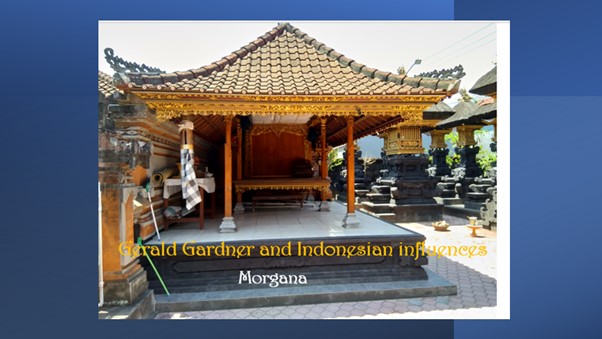
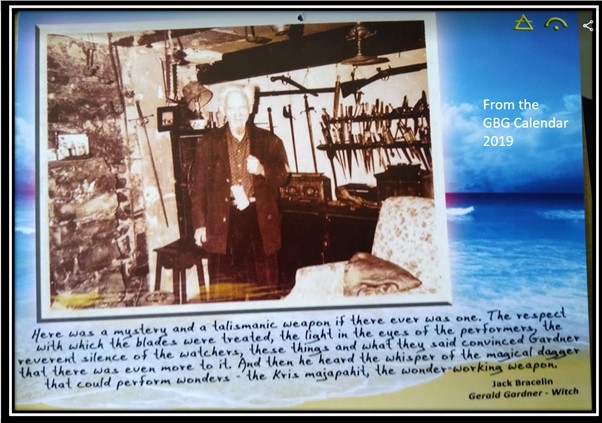


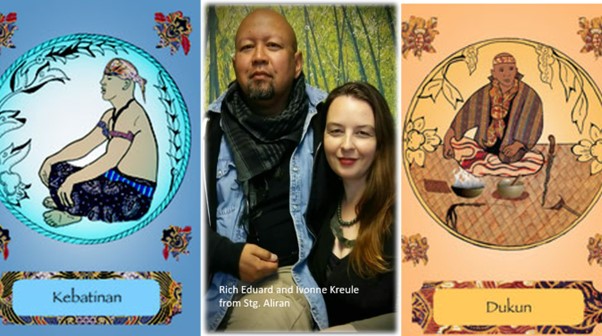
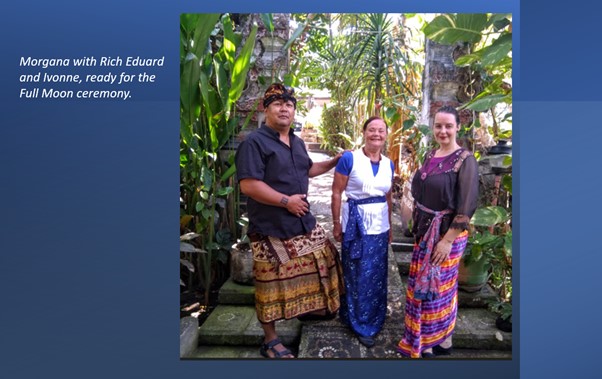


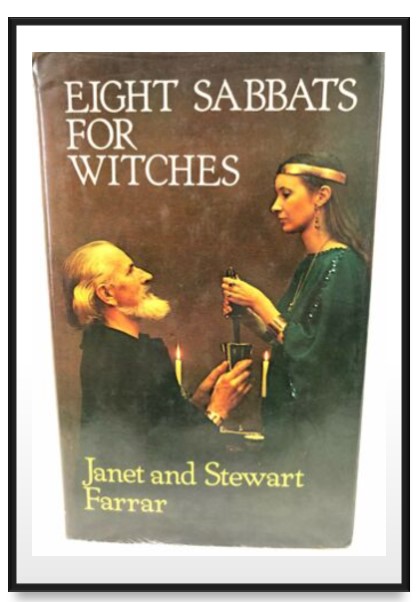
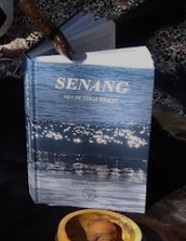
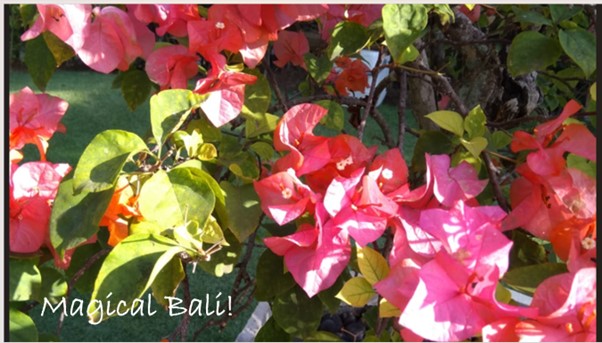
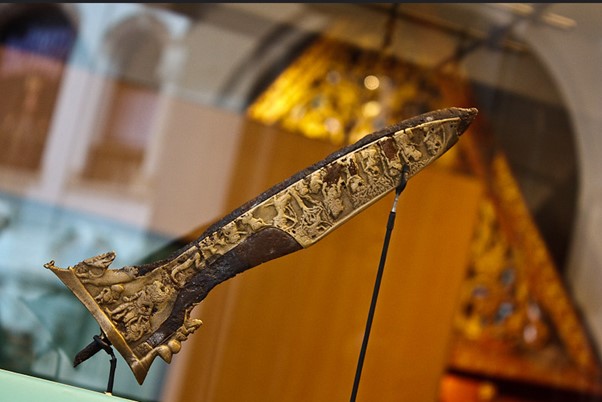
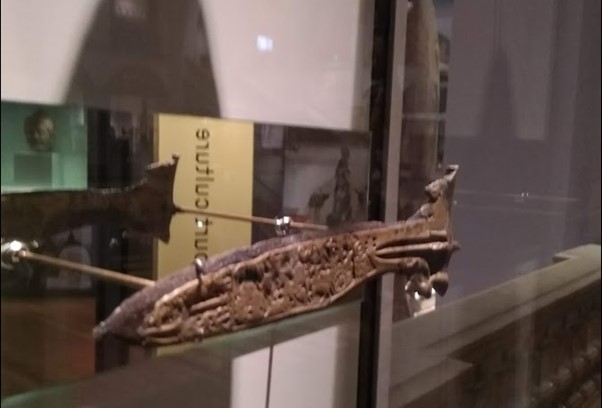
Correction: not Hamenkubuwono the 9th, but Pakubuwono the 9th is the name. Hamenku is from Yogjakarta and Paku is from Solo.
Jetske
How nice this extensive information about the keris, Morgana. Especially for those who are in many ways blank about what a holy keris can have for impact in the home and immediate surroundings. A keris with an entity must be or be given at all times, indeed from family member to family member, that’s how I got my keris. Personally, I am not enamored with the fact that the keris occupies a significant place in the household. It is a demanding “weapon” or “tool” that you have to maintain much more often than twice a year, but that aside. Fortunately, you can make certain agreements with the keris regarding maintenance and attention. I have done that. It remains for me to tell you that descendants from the Majapahit dynasty are still alive. My mother’s grandfather was Sultan Hamengku Buwono the Ninth. Although Solo and Yogja are cousins, the direct connection with our family is still Solo, unfortunately a bitter quarrel has arisen between the wives of the deceased sultan whose son would now be the real heir to the throne. But that can all be read on my personal facebook page. Sister Monica is the only one who has received an invitation to visit the graves of my (great) grandparents, for example. Also interesting is that everything is written down there, names, events and so on from the 12th century. My grandmother is in it but my mother is not, well that’s what you get when you marry a “foreigner”. B*B Jetske Dumais
Hi Jetske, many thanks for your reaction. It’s still a ‘work in progress’. It would be great if you could submit an article with your findings. I am particularly interested in the connection between the Kris & Athame. Do you think Gerald Gardner used any of his experiences and observations of the Kris when writing about the Athame in ‘Witchcraft Today’? We’ll have to meet up and continue the discussion, B*B Morgana (Thanks too for introducing me to Rich Eduard, so many years ago! )